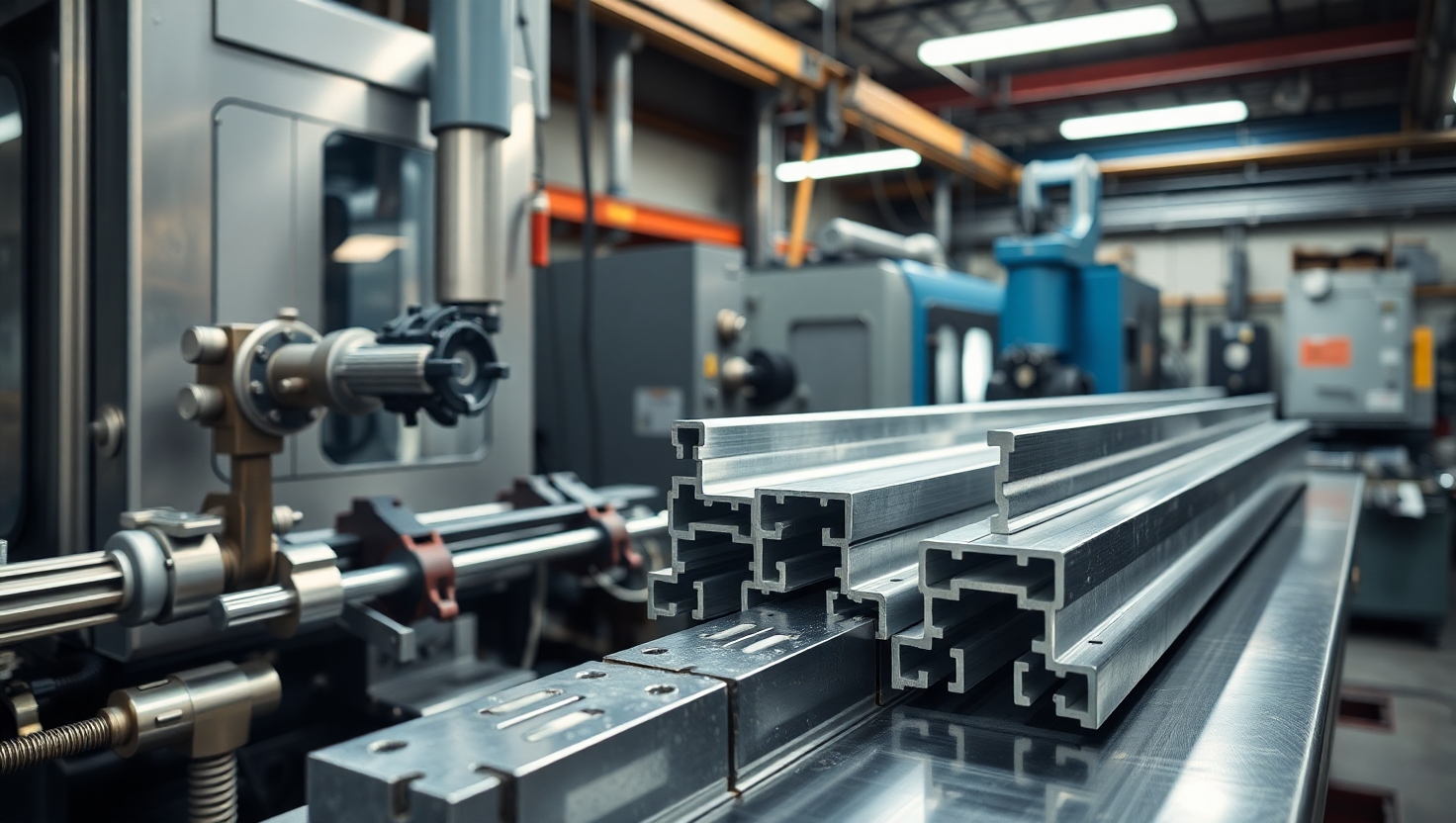Common Machining Challenges with Aluminium Profiles and How to Solve Them
Published by: ALUTimes | Date: July 10, 2025
Introduction
Aluminium is a popular material in manufacturing due to its lightweight, corrosion resistance, and excellent machinability. However, when working with aluminium profiles, especially in extrusion-based applications, machinists often encounter specific challenges that can affect productivity, precision, and product quality. In this article, we identify the most common machining issues with aluminium profiles and provide actionable solutions to overcome them.
1. Built-Up Edge (BUE) Formation
Challenge: Aluminium tends to form a built-up edge on cutting tools due to its high ductility and low melting point. This leads to poor surface finish and dimensional inaccuracies.
Solution:
- Use sharp carbide or diamond-coated tools.
- Maintain optimal cutting speeds and feeds (high speed, low feed).
- Apply appropriate lubricants or coolant to reduce friction.
- Use tools with special coatings (e.g., TiAlN or DLC) that resist adhesion.
2. Vibration and Chatter
Challenge: Due to aluminium’s low modulus of elasticity, it is prone to vibrations during machining, resulting in chatter marks on the profile surface.
Solution:
- Use rigid fixturing and proper clamping methods.
- Optimize cutting parameters (increase feed rate, reduce depth of cut).
- Use variable flute geometry tools to break harmonic vibrations.
- Ensure proper tool length—avoid overhang where unnecessary.
3. Poor Surface Finish
Challenge: Surface defects such as scoring, tearing, or roughness may appear on machined aluminium profiles, especially if chips are not evacuated properly.
Solution:
- Use polished tool surfaces and positive rake angles.
- Apply continuous and efficient chip evacuation (air blast or coolant flush).
- Choose high-speed spindles and smooth feed motions.
- Use reaming or finishing passes to enhance final surface quality.
4. Chip Control and Evacuation
Challenge: Aluminium produces long, stringy chips that can wrap around tools, damage the workpiece, or clog the machine.
Solution:
- Use chip breakers or specially ground cutting tools.
- Incorporate high-pressure air or coolant systems.
- Regularly clear chips from the cutting zone to maintain tool life and accuracy.
- Implement chip conveyors in CNC setups for automated evacuation.
5. Dimensional Inaccuracy
Challenge: Soft aluminium can deform under tool pressure or thermal expansion, leading to deviations from design specifications.
Solution:
- Ensure thermal stability of material and equipment.
- Pre-machine in roughing passes before finishing operations.
- Use low-stress clamping techniques and support the profile adequately.
- Check calibration of machines and use precision measuring tools.
6. Tool Wear and Short Life
Challenge: Aluminium machining may wear down cutting tools quickly due to its abrasiveness and thermal conductivity.
Solution:
- Invest in high-quality, coated carbide tools designed for non-ferrous metals.
- Use consistent coolant to keep tools at stable temperatures.
- Monitor tool life using CNC software and change tools at predefined intervals.
- Regular tool sharpening and maintenance schedules.
7. Burr Formation
Challenge: Aluminium profiles often produce burrs at edges or cut sections, leading to additional deburring work and increased time.
Solution:
- Use sharp tools and proper cutting parameters.
- Incorporate deburring operations into the CNC program (edge rounding).
- Apply brushing or tumbling after machining for bulk burr removal.
- Consider specialized deburring tools that work inline with machining.
Conclusion
While aluminium is a highly versatile and machinable material, its unique properties can lead to specific challenges during the machining of profiles. By understanding the root causes and implementing the right tools, strategies, and settings, manufacturers can significantly improve part quality, reduce waste, and enhance shop-floor productivity. Stay tuned to ALUTimes for more practical guides and expert insights into aluminium processing and fabrication.
Disclaimer
This article is intended for informational purposes only. ALUTimes is not affiliated with any specific tooling or machinery brands mentioned. Readers are encouraged to test and adapt the solutions based on their specific operational environment.

